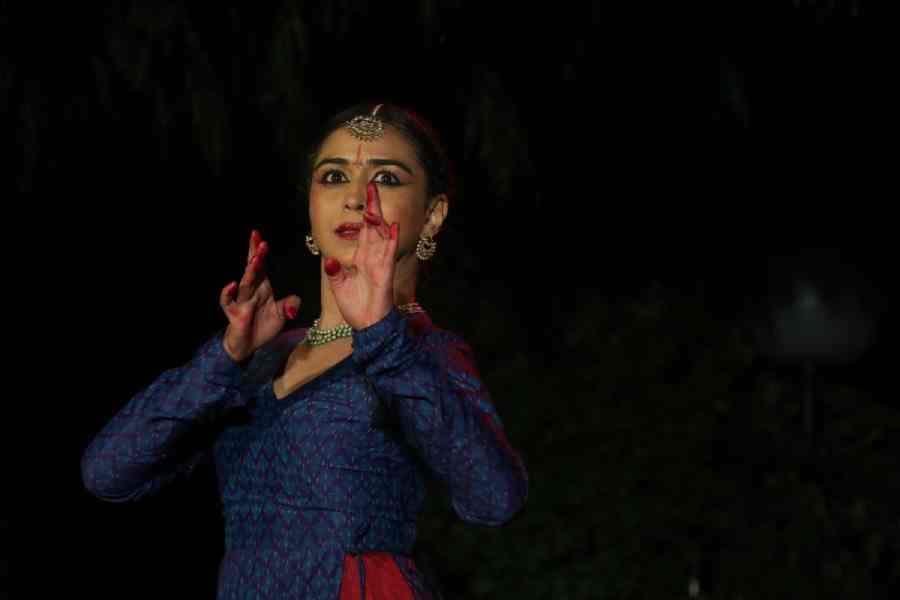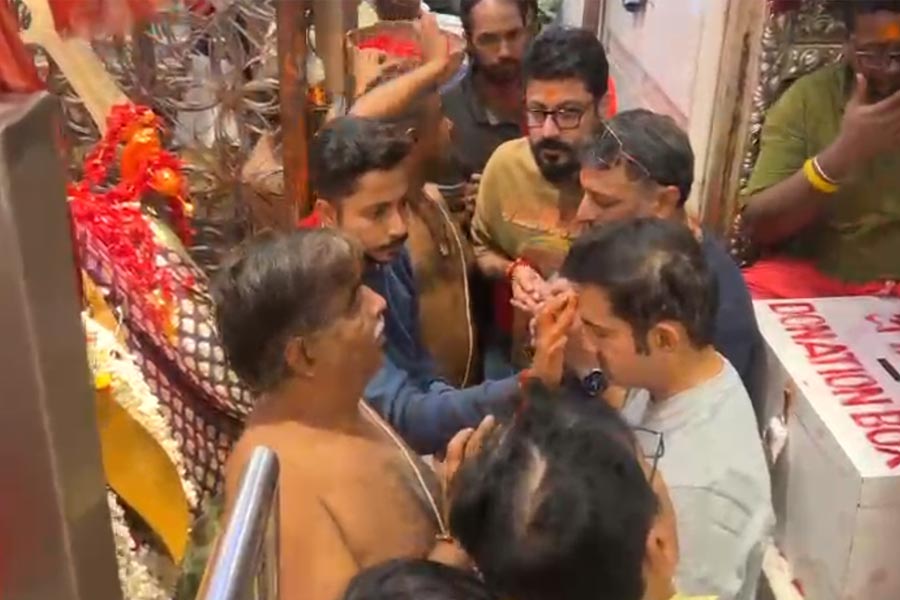If clichéd expressions like ‘spiritual grace’ in the context of Indian classical dance performances are alienating, an exquisite dancer like Sanjukta Wagh lends a strong sensorial accessibility and visceral urgency to them. In Taal Connect’s recent presentation of her work on the stunning rooftop of Azimganj House, in which she danced deeply-felt prayers and Bhakti and Sufi poems, it was as though Wagh connected you to your spirit.
It was an immersive experience with the dancer questioning words like ‘choreography’ in her own method and practice and settling for ‘curation’ of received material as a better description of her work. Rangrez, for Wagh, was an exploration of the textures of dance, poetry and music in which she examined encounters and points of intersection both cerebrally and through performance.
She breathed life into the songs carefully chosen from the repertoires of Girija Devi, Kishori Amonkar, Veena Sahasrabuddhe and Kumar Gandharva — serenely delivered live by Rutuja Lad — telling the stories assertively as much through the idiom of Kathak as through her brilliantly engaging articulation. Her exhilarating rendition of the Kabir bhajan, “Avdhoota, kudrat ki gat nyari”, became a carrier of the triple paradox of a poem on the formless being first set to music — for you to hear the unheard — and then to be danced. Nazeer Akbaravadi’s poem on the fragrance of spring, re-imagined by the dancer in jhaptaal, allowed her to explore a less flamboyant and more slow, steady and meditative Kathak, an almost forgotten art. Flirting and playing with numbers, she cleverly weaves in a lyrical parmelu, a gentle paran, percussive footwork and a spectacular 28-pirouette routine in a bold departure from the virtuosic format of the dance in favour of its lilting fundamentals.
Concluding with Soyarabai’s abhang, an ode to oneness immortalised by Kishori Amonkar, Wagh became an icon of contemplation. She ended with dizzying spins that evoked the whirling Sufi dervishes. That evening, Wagh brought one tantalisingly close to discovering the philosophical roots of the kinaesthetics of Kathak.











